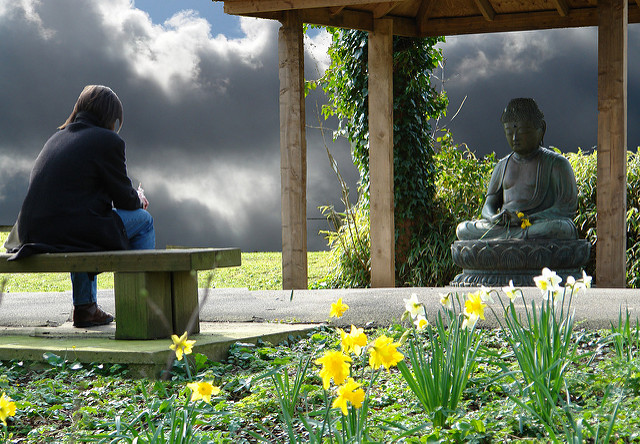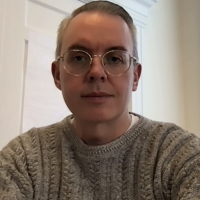
The reason that we cannot simply be present is that we have a habituated impulse to act—to lunge forward to what’s next, to find that one thing out there that we need to be okay.
It’s as if we are constantly seeking to fill a hole in ourselves, in our heart. Something isn’t quite right and we constantly reach out to finally find that missing link that will make us feel whole.
In this way, we are forever experiencing a sense of lack. We feel as if there is something that isn’t quite right and that there is always something that we need to do to correct this feeling.
The word that is used in traditional Buddhist teachings to describe this feeling is trishna. If you have read traditional Buddhist teachings you may recognize that word from the Buddha’s teachings on the Four Noble Truths.
The Four Noble Truths, or perhaps a better translation is the The Four Truths of the Noble One (the Buddha) were the first teachings that the Buddha offered after reaching enlightenment. They describe our predicament of feeling this constant sense of unease, or dissatisfaction (the first truth). They explain the cause (the second truth) and cessation (the third truth) of this suffering, and finally the path to be liberated from it (the fourth truth).
The best translation in English of the cause of discontent (trishna) seems to be grasping. It is that habituated impulse to act, that feeling that we need to do something. Essentially, it is the feeling that something is not quite right with things as they are right now, and we must jump ahead and find a way to fill or cover what is missing.
The thing about desire, in this sense, is that it is never actually about the object of desire, and so it is never fulfilled. Desire is a mentality that only strengthens the act of desiring, and when one object is obtained the craving impulse simply shifts to a different object. In this way, we never, or ever only briefly, feel satiated.
In shamatha meditation practice, we begin to work with this impulse. Sakyong Mipham once told a group of us meditating at Shambhala Mountain Center in Colorado that the main thing we are working with in our mindfulness-awareness meditation practice is breaking habit.
We have the simple object of meditation—feeling our body breathing—and when we are distracted by a thought or sensory perception, we notice and gently, but deliberately, return our attention to the feeling of our body breathing.
After doing that over and over and over again, we begin to be able to relax more and more into our present experience and ever more subtly work with that impulse to escape the moment.
In this way, meditation is seemingly akin to a type of behavioral therapy, using psychological terms. There isn’t anything particularly mystical or religious about this practice, although the experience can seem deeply satisfying and profound.
But, we are essentially retraining ourselves to experience our lives in a different way. Our culture seems to condition us—whether purposefully or not—to always be looking ahead. Many of us are taught that there is something fundamentally flawed or missing within us, and that we need to be fixed. If we only had that degree, or that job, or that beer, or that dress, or so on, we would finally be happy.
Meditation practice is a process of undoing, or unraveling, this pattern. We learn to let go of the struggle and find contentment with things as they are. This does not mean that we no longer seek to improve ourselves, or to achieve our goals, but we begin to do so from a position of strength and health.
Because what we learn—experientially—is that there actually was never any hole to begin with, there was never, fundamentally, any mistake that needed to be corrected, and that we were essentially okay just as we always were.
When we are able to feel that quality in our experience on a moment to moment basis, we let go of the grasping of our discontent and find the peace and wellbeing that was our birthright all along.
We can then bring that experience into our lives and relationships, and, radiating it out like the rays of the sun, be a force of change that impacts our world in a positive way.
~
~
~
~
~
~
~
~
Author: Travis May
Photo: Flickr/John Robinson

 Share on bsky
Share on bsky




Read 1 comment and reply